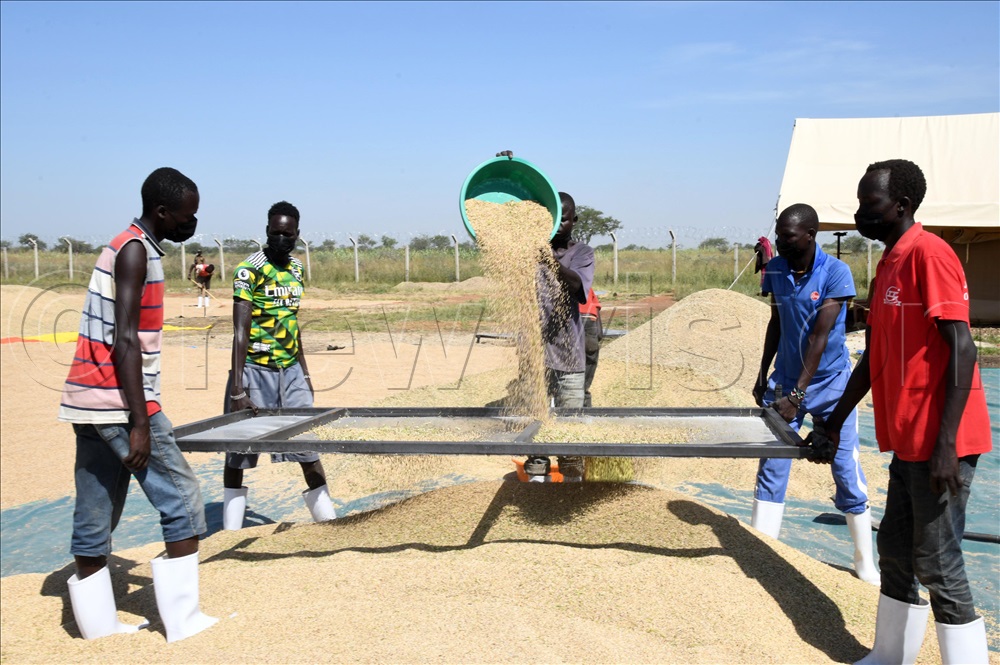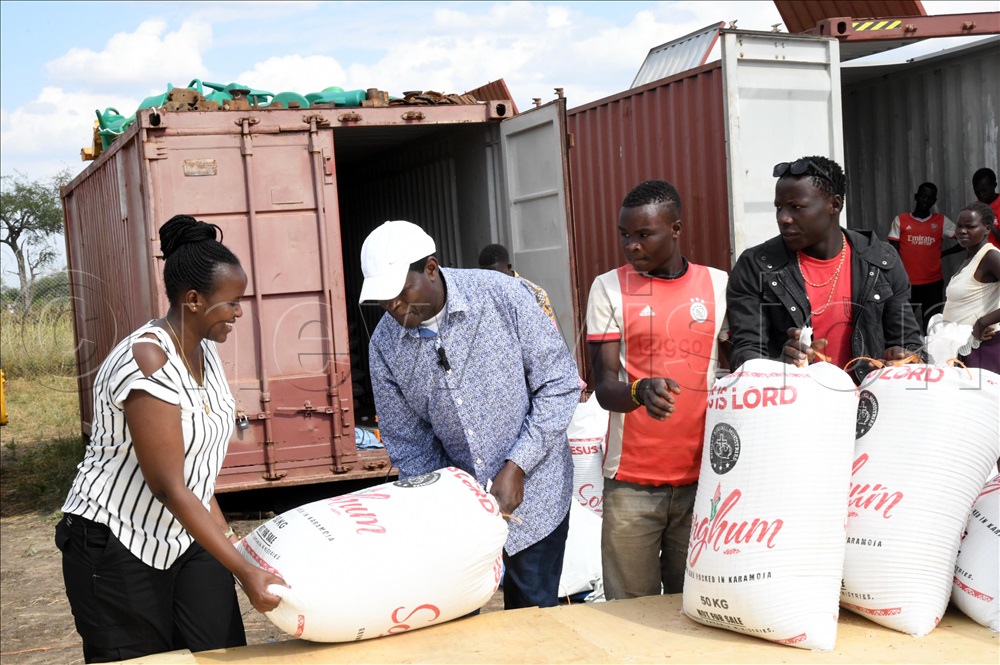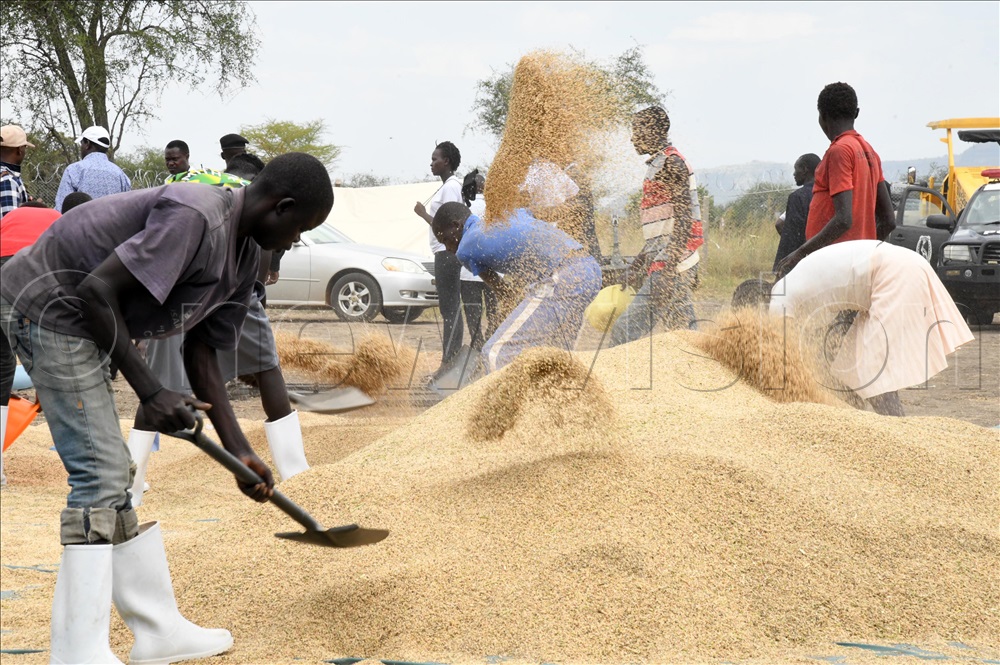By Eddie Ssejjoba
In September 2022, the senior pastor of Miracle Centre Cathedral, Rubaga in Kampala, Robert Kayanja, launched a campaign to feed Karamoja.
The campaign moved from purchasing food and transporting it to the sub-region to growing it on their soils.
“If Ugandans really want Karamoja to change, we need to get into farming,” Kayanja said at the launch.
Karamoja is a sub-region located in northeastern Uganda in the semi-arid region, bordering western Kenya. It covers an area of 27,528km, with a projected population of 1.4 million inhabitants and comprises nine districts — Abim, Amudat, Moroto, Kotido, Kaabong, Karenga, Nabilatuk, Napak and Nakapiripirit.
However, in 2022, the sub-region was hit with an acute shortage of food, with most households having no or limited food, which claimed lives.

The food shortage was caused by a long dry spell and constant raids by cattle rustlers from within the region and the Turkana in Kenya.
Kotido district had the highest number of deaths, with 1,676 cases, followed by Kaabong with 225, Moroto with 166, Napak with over 135 and eight in Karenga.
The acute food insecurity left many children severely malnourished and most adults too weak to engage in any productive work.
The Office of the Prime Minister started distributing food in several parts of Karamoja, but they were overwhelmed by the demand.
Kayanja mission starts
In August 2022, Kayanja, under the Robert Kayanja Bucket Initiative, a Church charity organisation, started mobilising resources from Christians and Churches affiliated to the Miracle Centre Cathedral.
He flagged off 20 tonnes of nutritious booster relief food to the starving communities in the sub-region, with the worst affected being people living with HIV and AIDS.
The pastor continued sending more food in the region.

Kayanja said he observed that the area had a lot of green vegetation and fertile soils suitable for agriculture.
It is from this background that between September and October last year, he embarked on a search for land where he planned to grow food crops.
With the help of the community leaders, he secured the land in Napak district, where he started clearing the fields to plant sorghum, the staple food in the region.
In April, he planted sweet short sorghum on 2,000 acres, which he started harvesting in mid-August 2023.
Kayanja believed that planting food crops on Karamoja soils would reduce the burden of him raising over sh45b from his followers and other Churches to feed the entire estimated population of 1.4 million people, according to the National Population Census, 2014.
Kayanja believes that Karamoja has fertile soils that can sustain growing food varieties such as wheat, sorghum, maize, beans, groundnuts, cassava, sweet potatoes and sunflower.

Today, he is thumping his chest, with a successful bumper harvest from the farm in Lorengecha sub-county, Napak district.
He said the bumper harvest is replacing the original campaign of Karamoja Cry, where he appealed for food, to a new slogan, Karamoja to feed Africa.
“We were crying for food to feed the hungry people, but the bumper harvest here in Napak demonstrates that Karamoja can feed Africa and that is now our mission,” he declared on Thursday last week, as he stood in the middle of the garden where two newly acquired combine harvesters were being used to harvest the ready crop.
How it all started Kayanja first responded to a serious food shortage in Karamoja sub-region in 2021 due to a prolonged dry spell.
The Kotido district chairperson, Paul Komol Lotee, said the sub-region experienced hunger mainly between June 2021 and June 2022.
He said although they received food relief from the Office of the Prime Minister and Kayanja, the situation was still bad and could get worse in the coming months due to poor harvest during the outgoing season.
Kayanja mobilised resources from his Church and bought food, which he transported directly to the needy families in various districts, including Kaabong, Moroto and Kotido.
During his visits to Karamoja, he noted that if helped, the people of Karamoja could grow their own food and stop the reccurring hunger.
He also said he needed to respond to the emergencies by growing short term crops, distribute to the starving communities and let his team embark on mindset change, encouraging the men who are always idle to work in the gardens.
Kayanja also decided to employ the local people, including men and women on his farm, to earn an income and also acquire skills in agriculture so that they can grow their own food crops. Stephen Byantwale Tibeijuka, the director Crop Protection at the agriculture ministry, said Karamoja has both a dry and green belt.
He said the green belt has good soils and receives much rain, suitable for agriculture, especially in parts of Napak, Karenga, Moroto and Nakapiripirit, where farmers can grow sorghum, simsim, sunflowers, maize, sweet potatoes and cassava.
Kayanja said between September and October, he located the land, but had to invite some community members to his Church for a week and took them to his other farms, to convince them that he was not in the area to take over their land, but to help them start growing their crops.
The actual clearing of the fields started in January and planting was done in April. Kayanja, however, explained that actual planting delayed due to late logistics, such as procuring the right seeds.
On the project, he employed the local people to clear the fields, plant and weed the crop, with the aim of letting them acquire skills of growing their own food crops.
Kayanja expects to harvest between 700kg and one tonne of fresh sorghum per acre. The variations, he explained, came with the invasion of birds that destroyed some parts of the farm after the crop started flowering, though they later applied methods of fighting them.
“Some fields were not affected by the birds, but where they concentrated, they reduced the harvest per acreage,” Kayanja said.
He, however, later acquired modern means to fight the birds.
He used sounds from vuvuzelas that he hired residents to blow to scare away the birds.
Kayanja said he chose to plant sorghum because it is one of the staple foods for the Karimojong and because it is short and cannot be affected by strong winds.
Big harvest
“This is our first harvest and the work is just beginning. We have harvested this much in the last four months, but if all people came together, we could enable this area to feed Africa,” Kayanja said.
He said the local people are happy with the project because they know it belongs to them and it was exciting for the first time to see such heavy machinery in the area.
Kayanja believes many are learning from the project, including those who have been employed.
They include drivers who were trained to operate tractors and trucks, those involved in the gardens and a group doing the winnowing.
“I am confident that Napak is going to become a model district not only in Uganda, but in the East African region,” he said.
Regional expansion
The team had officials from South Sudan and Kenya, who also requested him to start similar farms in their countries.
Kayanja said he recently met the Kenyan president, Dr. William Ruto and the First Lady, Rachel Ruto, who invited him to start a similar project in the Turkana area.
“The Turkana people are our neighbours and have a similar landscape and climate with Karamoja, we shall soon start a similar project in their area so that people don’t have to starve,” he said.
Kayanja, however, admitted that without heavy machinery, they could do little. He said the machines can harvest 13 tonnes per day.
“We really thank God for this bumper harvest,” he said, adding that the project started in Nakapiripirit in September last year, but the land was not enough.
After acquiring machinery, he needed bigger land, which he secured in Napak district. The project, he said, is contributing to job-creation and ending cattle rustling.
“For example, when we employ youths here, they work and spend the whole day out in the field, they get tired and cannot go back to engage in raiding their neighbours for cattle,” Kayanja explained.
The project is also doing wealth creation and will soon start supplying food to South Sudan in the Equatorial Region.
“The Government needs to partner with farmers like us so that we can help people to grow and feed themselves,” Kayanja stated.
He has also discovered that from sorghum, he can get silage, which can be converted into many things, such as cattle feed, paper, sugar and food.
“We are now feeding the silage to the community animals that are driven near the camp to feed, but we can get many products out of it,” Kayanja said.
“Our purpose here was to stop hunger and then tell the people of Karamoja that they can feed Africa. Even if it is one season in a year, you can change your life,” he added.
Kayanja commended the youths of Karamoja, saying many were energetic and hardworking, and were capable of growing food on their own if well-guided and persuaded to quit cattle raiding.
“Our major mission here is to transform the people of Karamoja and create wealth, so working with our friends from Kenya and South Sudan, we are thinking that East Africa, the land of the Great Lakes, stands a great chance of fighting the desert and climate change and providing enough food for all the people, employment, as well as a good living to everybody,” he said.
“My message is simple; like the story of the sower as by Jesus Christ in the Bible, the sower moved to three different sites until he identified the good soils and when he planted, got 30, 60, 100 folds of harvest and I believe in this country, as leaders, we need to sow these seeds of hope, joy, brotherly love, oneness, work, wealth creation, trust and hard work, because everything will come to us if we have worked,” Kayanja said.
He appealed to the church ministers to stand with him, rise up and take agriculture as a serious project.
“The church leaders must not let agriculture go into the hands of the corrupt,” Kayanja said, adding that he also wanted the church to use such projects to employ young people.
“We are not going to employ them by sending them outside the country, but by letting them work in the areas where they were born, grew up and can excel,” he added.
Kayanja believes that if the government partnered with farmers like him, who he says are purely working with little money, but spend on the actual projects, it would give big returns.
“Everybody I have talked to, even myself, is so impressed with the work that is being done here, there is tangible result and I believe we don’t have to spend much money; we just have to find the right people to do the work,” he said.
Kayanja said the project has harvested 99% of the crop planted, which would not have been possible if they did not employ technology, including planting tractors.
He also said peace is vital for stable farming and thanked the security agencies in the area that have provided protection to the workers.
Kayanja, however, said the biggest challenge is now drying the harvested crop.
He said as he talked, the combine harvesters had also picked 13 more tonnes waiting to be offloaded, yet there is already a lot of crop on the drying racks that is yet to dry up.
“We want our staff to construct more drying spaces, but we need to come up with a quick way of sorting this out so that our harvests do not go to waste,” Kayanja said.
Challenges
The farm manager, Godfrey Lagu, said at some point, the workers were afraid after earlier threats that they would be attacked by cattle rustlers.
He said they mobilised many youths who were idle to come and work on the farm after changing their mindset toward work.
Lagu said they have started clearing fields in preparation for the next season, in which they want to plant 5,000 acres of crop. He said they will keep expanding until they achieve their target of 10,000 acres.
“We still need more funds to achieve our mission,” Lagu said.
Anthony Lemukol, the Lorengechora Town Council clerk, who was involved in the mobilisation and obtaining of land for the project, thanked Kayanja for giving employment to the youths, who are also at the same time picking skills in agriculture.
He said many have, for the first time, earned an income, with each earning between sh5,000 and sh7,000 per day on the farm.
Lemukol said at the peak, the farm employed over 7,000 workers. Other skilled workers like machine operators earn sh800,000 and above and that the majority are local people who were trained.
“After here, we expect many of our people to start their own farms and gardens to feed our people because we know there is still hunger in Karamoja,” he said.
Lemukol said many homes were not able to produce their own food because they are child-headed after the adults were killed by cattle rustlers.
Sarafina Kodet, the co-ordinator of Kayanja activities in Karamoja sub-region, said a group of women who were employed to work on the farm divided themselves into groups of five and would use their savings in each group to hire other labourers to clear land for them to plant food.
They ensured that they used the savings to clear land for one member in one week and keep on rotating until everyone is served.
Kodet said as they continued working on Kayanja’s farm, the women were also growing their food and planting sorghum and simsim.
They also hired tractors from the farm at a small fee of sh100,000 per acre to plough and then they participate in the planting.
The management used to give them one day in a week to attend to their gardens.
They bought the seeds from the market, each tin at sh8,000, but the experts on the farm have also been training them how to sort the harvest to get good seeds. “
So, as we started harvesting, these women have also been harvesting in their gardens.
“I have been visiting these gardens and the women are doing well, we hope this will spread to several other communities and, gradually, change their mindset towards work,” Kodet said, adding that one member cultivated five acres.
She said although neighbouring communities received food, the project is focusing on a bigger demand in Kotido, Moroto and some parts of Napak (Matany), where the gardens were affected by a dry spell.





